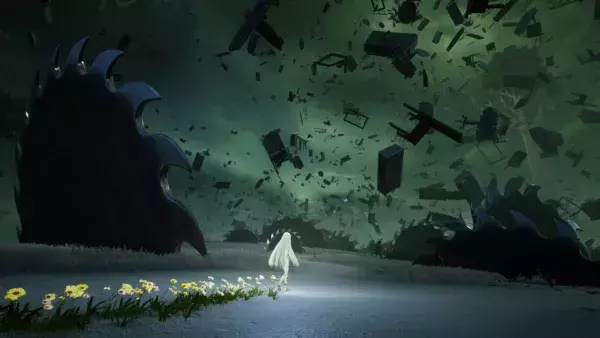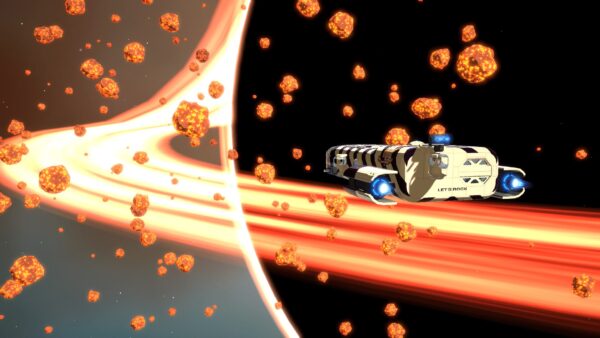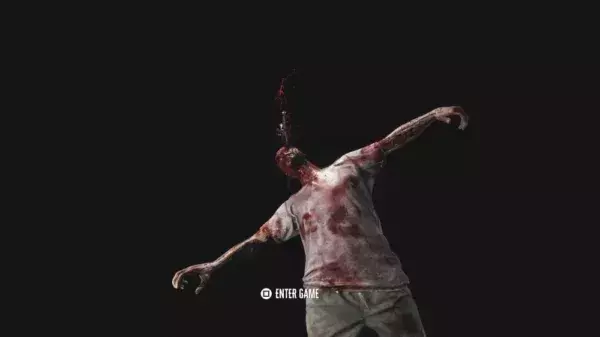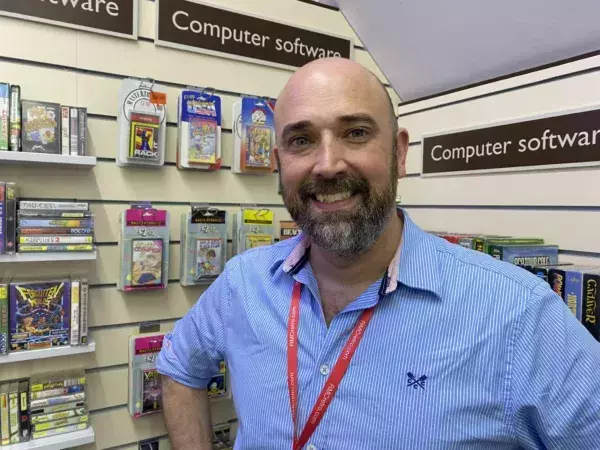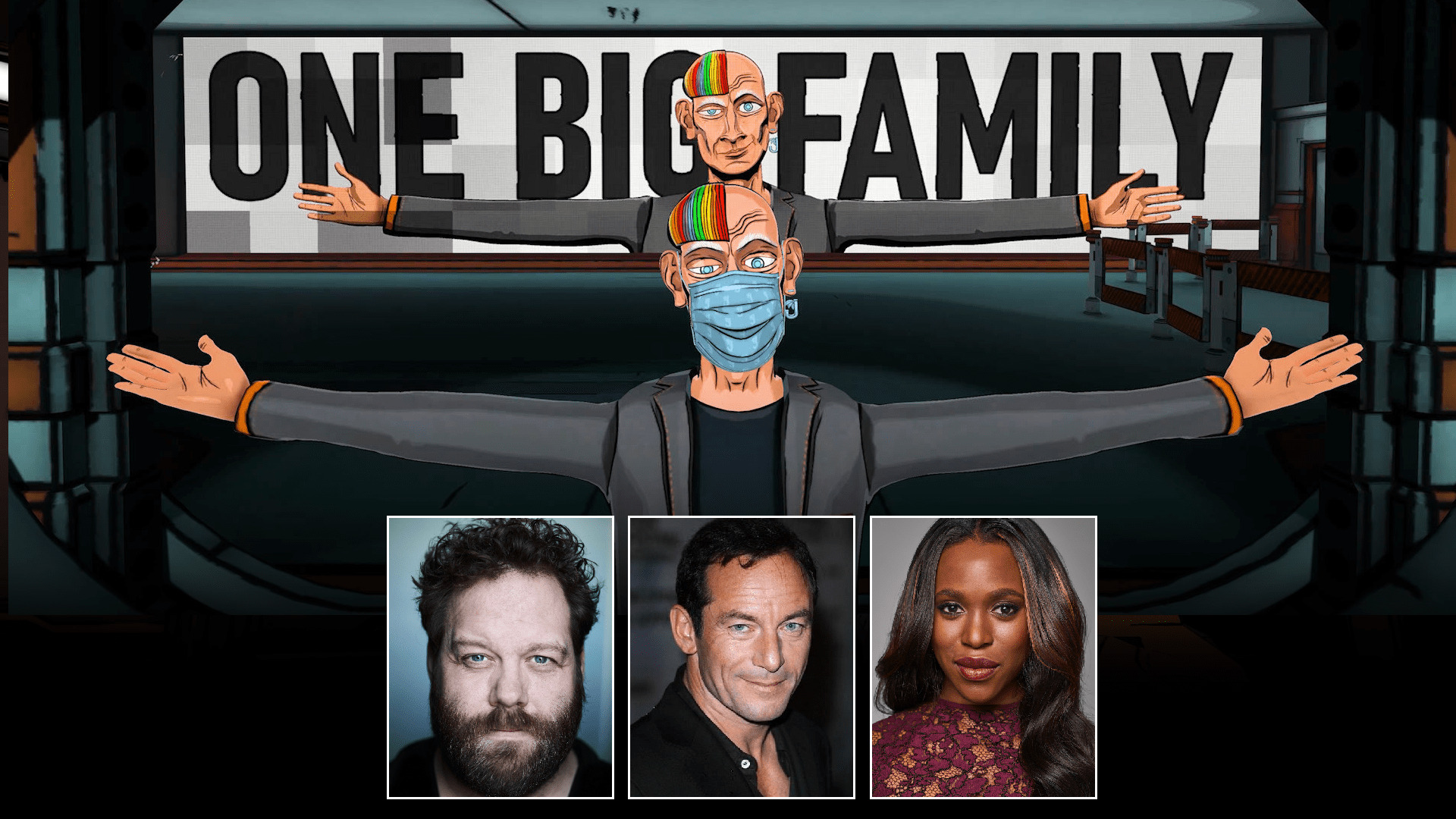
The Last Worker cast, including the wonderful Jason Isaacs, reflect on the upcoming game’s themes of humanity in a late-capitalist, automated future.
Set in the near future, The Last Worker takes place in a gigantic fulfillment centre where automation has almost entirely taken over its day-to-day operations. The lone human employee left is Kurt (played by Ólafur Darri Ólafsson), who gloomily goes about his daily shifts in a warehouse the size of Manhattan, his sole companion being Skew, an artificially intelligent robot (or co-bot) voiced by Jason Isaacs. The first game to run in competition at the Venice Film Festival, The Last Worker was initially conceived as a VR experience during the peak of the global pandemic. It was almost as though creator Jörg Tittel was trying to find solace in a fictional world even more dystopian than our own.

Hello to Jason Isaacs. Credit: Wolf & Wood.
For Jason Isaacs, however, automated warehouses like the game’s Jüngle Fulfillment Centre are part of the hear-and-now. “The question is, how fictional are giant fulfillment centres that are entirely staffed automatically? Go online now and have a look at clips of how automated they already are,” he says. “How many humans are needed at your local supermarket anymore? Will we soon be stocking the shelves like vending machines, because no one’s serving people? So, this doesn’t feel that fictional to me.”
But even in this increasingly automated world, it’s the humans in it that resonate. During the game’s development, Ólafsson found he became more interested in finding stories of what already goes on at fulfillment centres of massive corporations like Amazon. “Some of it was quite scary, dystopian, and terrifying,” he says. “We’ve even seen films like Nomadland, about a woman who works for Amazon around the busy Christmas time and, outside of that, is basically homeless.”
That desperation is also depicted in The Last Worker, as Kurt goes about his daily shifts, picking up and delivering packages, while recycling incorrectly labelled and damaged items. While getting around in a floating pod and using a gravity gun makes these tasks more engaging, the mechanics serve to reinforce the monotonous drudgery of the work and the constant pressure to perform well, lest Kurt finally be made obsolete like his former colleagues.

Clare-Hope Ashitey. Credit: Wolf & Wood.
There’s no reward other than being able to survive another day without being fired. Afterwards, Kurt returns to a squalid landfill, which Kurt drily refers to as “working from home”. It’s also an existence Kurt has an opportunity to escape when he meets another character (played by Clare-Hope Ashitey), piloting a robot called Hoverbird. She tries to coax Kurt into joining her activist group, S.P.E.A.R, which seeks to overthrow Jüngle’s automated world order. As attractive and zeitgeist-y as taking part in a revolutionary attempt to bring down big tech sounds, it’s the story’s focus on human connection that drew its cast to the project.
“Everything that it has to say about technology and automation, at the base of it, is about humans, human drives, and impulses, the things that we need and desire,” Ashitey explains. “It’s really important not to get lost in the story of technology and technological progress.”
Read more: Developers Jorg Tittel and Ryan Bousfield on The Last Worker’s design and inspiration
A character whose aim is to restore workers’ rights over automation couldn’t feel more timely in the UK’s current climate, as people from across a variety of sectors take industrial action in the face of a cost of living crisis and the threat of mass redundancies. Unsurprisingly, those strike actions are routinely vilified by the right wing press, but there’s also a concern that, under the banner of collective action, the issues raised become overly didactic. It’s easy to forget that, behind the placards and headlines, there are also human stories.
Says Ashitey, “All of the issues that we experience in society, whether they’re good or bad, are intimately tied to the story of the human, and they have to be, so you can’t tell one side of it without telling the other and you can’t go, this is only about technology, or this is only about climate change, without understanding our place in it. They have to be connected, because if you don’t see your place in something, then people would find it hard to find a way of caring.”
Perhaps the most human element came from the cast’s relationship with The Last Worker creative director, Jörg Tittel; Isaacs, Ólafsson, and Ashitey had all previously worked with Tittel as a filmmaker. Recording their lines therefore took on a more personable air compared to your usual voice acting job in games, where work often take place in an isolated booth, sometimes with next to no information about the character or even the game the actor’s voicing for.

Ólafur Darri Ólafsson brings everyday humanity to the protagonist, Kurt. Credit: Wolf & Wood.
For Isaacs, who himself as “genetically a catastrophist”, voicing Skew was as much about finding a shred of normality in an abnormal world. The role also had the appeal of letting him use his own, full Scouse accent for the first time.

Ólafur Darri Ólafsson. Credit: Wolf & Wood.
“I once played someone who had a very mild Liverpool accent in an Inspector Morse episode about 30 years ago, so this was lovely,” he says. “There are cities in the world where everyone feels the need to try and say something funny, and Liverpool is one of them, so it’s nice to release that sarcasm.”
Skew’s accent, and penchant for cursing, is a deliberate contrast to the cookie-cutter corporate American voice he has at the start of the game; after what appears to be a malfunction, the co-bot then takes on Isaac’s distinctive tones. Skew’s personality also points to advances in AGI (Artificial General Intelligence), since it’s a self-learning machine capable of developing human traits. So when Kurt and Skew converse, it’s more like two grumpy old men bickering than a man talking to a machine.
“As much as [Kurt] would pretend that he hates him and is tired of him, says Ólafsson, “if Skew wasn’t there, he would miss him.”

Jason Isaacs plays Kurt’s constant robot buddy Skew, who’s with you throughout much of the adventure.
The Last Worker’s voice acting was recorded in different locations, but technology still allowed its performers to record their lines together in real-time. But what really gives the voice acting its human touch is the amount of swearing in the dialogue; while some games use profanity to sound edgy, The Last Worker uses it to create a real sense of authenticity.
“Used correctly, it’s entertainingly witty punctuation,” says Isaacs. “It’s odd watching drama or playing games where people don’t swear. You’re suddenly reminded that this is being created for your benefit because it doesn’t feel anything like life, because people swear in life – certainly people from Liverpool, for sure.”
The characters’ humanity also makes their allegiances less clear cut. Is Skew, a Jüngle drone, really Kurt’s friend, or should we be more trusting of Hoverbird, a machine piloted by a real human but also with her own agenda? Whatever players take away from the game’s critiques of ‘end-stage capitalism’, it’s the human and emotional connections that shouldn’t be lost.
“The best way to get a message across is not to give any message at all,” Isaacs argues. “You’re having a very entertaining time, and it so happens that all the same skills, enjoyment, dopamine hits, reveals and narrative pleasure is in service of reminding you that big tech is taking over the world. We’re being dehumanised, but emotional connections are valid, and that there is hope. It’s subliminal.”
The Last Worker releases on PSVR2, PC, PC-VR, Quest 2, PS5, PSVR2, Xbox Series X/S, and Switch on 30 March.


